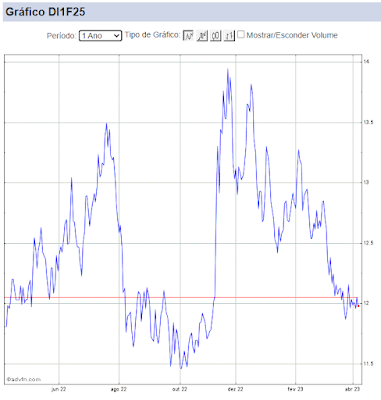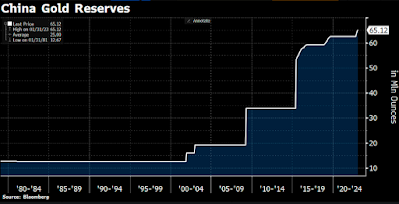Minutas do FOMC confirmam mudança de tom.
As Minutas do
FOMC, na minha visão, confirmam uma mudança clara de tom por parte do Fed. Em
comparação com as Minutas recentes, e com os discursos recentes, percebo um
aumento do número de participantes desconfortáveis com alguns sinais da
economia, especialmente global, e de alguns movimentos dos ativos de risco como
um todo.
O Fed está
dependente dos dados, muito mais do que antes, mas há uma mudança de tonica que
não pode ser ignorada. As Minutas de hoje reforçam os meus comentários recentes
(https://mercadosglobais.blogspot.com/2018/11/year-end-rally-configurado-e-reforcado.html
e https://mercadosglobais.blogspot.com/2018/11/a-janela-de-oportunidade-continua.html).
Separei alguns
destaques abaixo:
Based on recent readings on spending, prices, and the labor
market, participants generally indicated little change in their assessment of
the economic outlook, with above-trend economic growth expected to continue
before slowing to a pace closer to trend over the medium term. Participants
pointed to several factors supporting above-trend growth, including strong
employment gains, expansionary federal tax and spending policies, and continued
high levels of consumer and business confidence. Several participants observed that the stimulative effects of fiscal
policy would likely diminish over time, while the lagged effects of reductions
in monetary policy accommodation would show through more fully, with both
factors contributing to their expectation that economic growth would slow to a
pace closer to trend.
Although household spending overall was seen as strong, most
participants noted weakness in residential investment. This weakness was
attributed to a variety of factors, including increased mortgage rates,
building cost increases, and supply constraints.
Reports from District contacts in the manufacturing, energy,
and service sectors were generally favorable, though growth in manufacturing
activity was reportedly moderating in a couple of Districts. Business contacts generally remained
optimistic about the outlook, but concerns about trade policy, slowing foreign
demand, and labor shortages were reportedly weighing on business prospects.
Contacts in the agricultural sector reported that conditions remain depressed,
in part, due to the effects of trade policy actions on exports and farm incomes.
Contacts in many Districts continued to report tight labor
markets with difficulties finding qualified workers. In some cases, firms were
responding to these difficulties by increasing training for less-qualified
workers, outsourcing work, or automating production, while in other cases,
firms were responding by raising wages. Contacts in a couple of Districts
indicated that labor shortages, particularly for skilled labor, might be
constraining activity in certain industries. Participants observed that, at the
national level, measures of nominal wage growth appeared to be picking up. Many
participants noted that the recent pace of aggregate wage gains was broadly
consistent with trends in productivity growth and inflation.
Participants commented on a number of risks and uncertainties
associated with their outlook for economic activity, the labor market, and
inflation over the medium term. A few participants indicated that uncertainty
had increased recently, pointing to the high levels of uncertainty regarding
the effects of fiscal and trade policies on economic activity and inflation. Some participants viewed economic and
financial developments abroad, including the possibility of further
appreciation of the U.S. dollar, as posing downside risks for domestic economic
growth and inflation. A couple of participants expressed the concern
that measures of inflation expectations would remain low, particularly if
economic growth slowed more than expected. Several
participants were concerned that the high level of debt in the nonfinancial business
sector, and especially the high level of leveraged loans, made the economy more
vulnerable to a sharp pullback in credit availability, which could exacerbate
the effects of a negative shock on economic activity. The potential for
an escalation in tariffs or trade tensions was also cited as a factor that
could slow economic growth more than expected. With regard to upside risks,
participants noted that greater-than-expected effects of fiscal stimulus and
high consumer confidence could lead to stronger-than-expected economic
outcomes. Some participants raised the concern that tightening resource
utilization in conjunction with an increase in the ability of firms to pass
through increases in tariffs or in other input costs to consumer prices could
generate undesirable upward pressure on inflation. In general, participants
agreed that risks to the outlook appeared roughly balanced.
Participants emphasized that the Committee's approach to
setting the stance of policy should be importantly guided by incoming data and
their implications for the economic outlook. They noted that their expectations
for the path of the federal funds rate were based on their current assessment
of the economic outlook. Monetary policy was not on a preset course; if
incoming information prompted meaningful reassessments of the economic outlook
and attendant risks, either to the upside or the downside, their policy outlook
would change. Various factors such as
the recent tightening in financial conditions, risks in the global outlook, and
some signs of slowing in interest-sensitive sectors of the economy on the one
hand, and further indicators of tightness in labor markets and possible
inflationary pressures, on the other hand, were noted in this context.
Participants also commented on how the Committee's communications in its
postmeeting statement might need to be revised at coming meetings, particularly
the language referring to the Committee's expectations for "further
gradual increases" in the target range for the federal funds rate. Many participants indicated that it
might be appropriate at some upcoming meetings to begin to transition to
statement language that placed greater emphasis on the evaluation of incoming
data in assessing the economic and policy outlook; such a change would help to
convey the Committee's flexible approach in responding to changing economic
circumstances.


Comentários
Postar um comentário